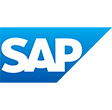HR leaders often grapple with keeping employees motivated and engaged. A common misconception is that monetary incentives alone are enough. But true engagement stems from a balanced approach, integrating both rewards and recognition (R&R). Yet, despite its effectiveness, many organizations undervalue or misunderstand R&R.
What is R&R in HR? (R&R Full Form Explained)
In HR, “R&R” stands for “Reward and Recognition.” It’s a structured approach to appreciating employees’ efforts, achievements, and contributions through tangible rewards and intangible recognition.
- Reward typically involves financial or tangible incentives—bonuses, gift cards, or salary increments.
- Recognition focuses on non-monetary appreciation—verbal praise, public acknowledgment, awards, or titles.
Let us understand this with an example:
- Reward: Providing a performance bonus for meeting quarterly sales targets.
- Recognition: Publicly acknowledging an employee’s contribution to a successful project during an all-hands meeting.
In this rewards and recognition article, we also cover-
Reward vs. Recognition—What’s the Difference?
While reward and recognition share a common goal of employee appreciation, their distinct characteristics set them apart. Understanding these differences is key for HR professionals aiming to create a balanced and effective R&R strategy.
Tangible vs. Intangible
Rewards are typically tangible, involving material benefits or financial incentives like bonuses, salary raises, or gifts. These are quantifiable and often tied directly to measurable performance outcomes. For example, achieving sales targets might result in monetary bonuses or gift vouchers.
Recognition is intangible, relying heavily on emotional and psychological satisfaction. It includes verbal praise, public acknowledgment, certificates, or awards that celebrate achievements or behaviours aligning with organizational values. Recognition might look like publicly acknowledging an employee’s exceptional teamwork during a team meeting or via company-wide communication channels.
Scheduled vs. Spontaneous
Rewards usually follow structured schedules or clearly defined conditions. For example, annual bonuses or quarterly incentives are planned and communicated in advance. This structured approach can effectively motivate employees to reach specific goals.
Recognition, conversely, is most impactful when it is spontaneous and authentic. Immediate acknowledgment following an accomplishment strengthens the emotional impact and reinforces positive behaviours instantly. Spontaneous recognition could be a manager praising an employee’s quick thinking during an unexpected challenge.
Monetary vs. Emotional
Rewards primarily fulfil monetary or material expectations, directly addressing financial motivations. This makes rewards highly effective for goal-oriented roles or competitive environments.
Recognition addresses the emotional and psychological needs of employees. It reinforces employees’ sense of belonging and value within the organization, significantly enhancing morale and loyalty.
Reward vs. Recognition—What’s the Difference?
Aspect | Reward | Recognition |
Nature | Tangible | Intangible |
Timing | Scheduled | Spontaneous |
Impact | Monetary/Material | Emotional/Psychological |
Example | Bonuses, gifts, raises | Public praise, certificates |
Rewards typically involve tangible, quantifiable benefits tied directly to measurable performance outcomes. Recognition is intangible, emotional, spontaneous, and reinforces positive behaviours and values.
Why R&R is Crucial in Today’s Hybrid Work Culture
The shift toward hybrid and remote working models has fundamentally altered traditional employee engagement dynamics. In this environment, the significance of a robust R&R strategy is magnified.
Maintaining Engagement and Motivation
Remote and hybrid setups risk employee disengagement due to reduced physical interaction and limited face-to-face communication. Effective R&R strategies help bridge this gap, maintaining morale and ensuring consistent employee motivation by celebrating achievements and milestones irrespective of location.
Enhancing Communication and Connection
Recognition in remote or hybrid environments often takes digital forms, such as virtual town halls, social media shout-outs, and digital recognition platforms. This helps maintain clear, positive communication channels, fostering a sense of belonging and connection among geographically dispersed teams.
Reinforcing Organizational Values
Recognition is a powerful tool for reinforcing organizational values and behaviours. Especially when teams are distributed, frequent acknowledgment of behaviours aligned with company values helps sustain the organizational culture and ensures consistent performance standards.
Addressing Wellbeing and Burnout
A thoughtful R&R strategy recognizes not only achievements but also acknowledges efforts and resilience during challenging periods. Regular recognition can significantly reduce feelings of burnout by providing employees with emotional support and validation, which are particularly critical in remote work contexts.
| Challenge | Solution |
| Employee disengagement due to remote setup | Celebrate achievements irrespective of location |
| Reduced interaction and communication | Digital recognition platforms for clear communication |
| Sustaining organizational culture | Frequent recognition aligned with company values |
| Addressing burnout and wellbeing | Regular acknowledgment of efforts and resilience |
Key Benefits of an Effective R&R Strategy
- Increased employee engagement and motivation.
- Higher retention rates and reduced turnover.
- Enhanced productivity and performance.
- Strengthened organizational culture through consistent value reinforcement.
- Greater job satisfaction and employee wellbeing.
Real-world Implementation Ideas for HR Leaders
- Introduce a peer-to-peer recognition program to foster teamwork and camaraderie.
- Utilize digital recognition platforms to streamline acknowledgment processes.
- Develop personalized reward systems tailored to individual and team achievements.
- Implement periodic virtual celebrations and acknowledgment meetings to sustain remote employee engagement.
- Regularly communicate and update employees on recognition programs and available rewards.
Leveraging R&R Applications To Achieve Great Results
- Automation of reward distribution based on performance analytics.
- Digital platforms for instant, real-time recognition.
- Mobile accessibility ensuring employees stay connected and motivated.
- Data-driven insights to continuously refine and optimize R&R strategies.
By utilizing advanced rewards and recognition apps, organizations can effectively manage R&R programs, fostering a highly motivated and engaged workforce.
Conclusion
Reward and recognition programs are pivotal in driving employee engagement, motivation, and organizational success, especially in hybrid work environments. HR leaders must leverage comprehensive solutions to develop and maintain robust R&R strategies. Explore how Embee Software can transform your organization’s approach to employee appreciation today.
Frequently Asked Questions (FAQs)
Reward and Recognition.
They motivate employees by providing tangible incentives for achieving performance goals.
Recognition boosts morale, enhances employee engagement, and promotes positive behaviours.
Bonuses, salary raises, promotions, gift vouchers, and paid leaves.
Public praise, awards, certificates, shout-outs in meetings or newsletters.
Rewards are tangible, monetary, and scheduled, whereas recognition is intangible, emotional, and spontaneous.
Yes, effective R&R strategies significantly increase employee satisfaction and retention.
It addresses remote employee disengagement, fosters communication, and maintains company culture.
A recognition system where employees acknowledge each other’s contributions and achievements directly.
















































